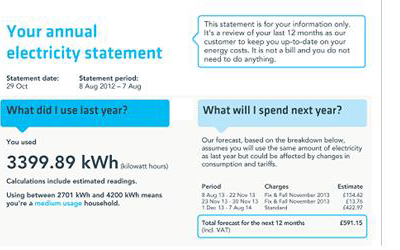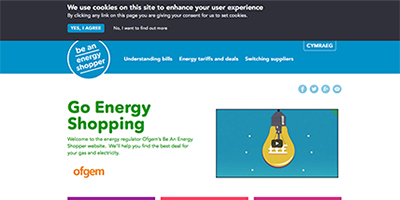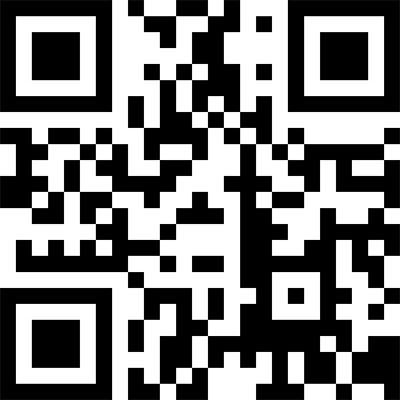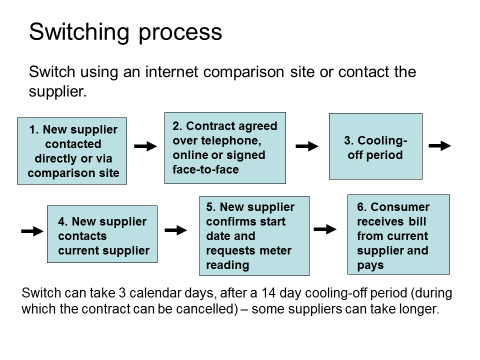Home Energy Advice
Switching Process
Gathering the information prior to switching
Information required from the consumer:
- ï‚· Name of current tariff
- ï‚· Payment method
- ï‚· How much the energy has cost over the last year
- ï‚· Usage (in kWh) over the last year
- ï‚· Property postcode
- ï‚· Metering Point Administration Number (also known as the MPAN, ‘Supply number’ or the ‘S’ number). This can be found on the electricity bill with a large S in front of it, followed by a grid of 13 numbers
- ï‚· Meter Point Reference Number (MPRN or M number) which should also be printed on the gas bill
The usage and cost of the fuel can be calculated using energy bills. Energy bills now include an ‘about your tariff’ section which contains some of the key information required to facilitate a switch or price comparison. The most helpful document is the annual statement/ summary.
The statement/ summary should include:
-  a reminder of the principal conditions of the customer’s contract;
-  information about any premiums or discounts that may apply to the customer’s tariff as compared to the supplier’s standard tariff where payment is by direct debit;
-  a reminder that the customer can switch along with advice on how to do so;
- ï‚· a record of how much energy has been used in the previous 12 months;
-  the name of the customer’s current tariff; and  an estimated cost in £/ year of the customer’s supply for the next 12 months if the customer remains on the same tariff.
The consumer can contact their existing supplier to ask them for a prediction of usage and cost over a twelve month period.
For consumers using a prepayment meter having an estimate of how much they spend on fuel in a week or month during the summer and winter months will be helpful.
Finding informationÂ
Price comparison information enables the consumer to compare the prices across all suppliers. This information can be accessed online or by telephone.
The consumer can contact a supplier or use an internet comparison website, many of which can be contacted by telephone if preferred.
It is advisable to use a comparison website that is accredited by Ofgem and complies with the Confidence Code.
The new Confidence Code went live on 1 April 2015. From this date, accredited sites will be required to adhere to the new requirements, strengthening the service they provide to consumers.
The new Code means accredited sites must meet tighter standards on how tariffs are displayed so consumers can be confident they can find the best deals in the market. They will also have to list prominently which energy companies they have commission arrangements with, and make it clear that they can earn commission on certain tariffs.
The changes will help customers make an informed choice when using an accredited comparison site. They are:
ï‚·Banning a default partial view. Sites must show all tariffs available in the market unless customers actively choose to select to see a smaller number of tariffs.
ï‚·Ending confusing language. The wording of any choice must be very clear to site users. Sites must test their messaging with consumers and be able to prove that it is clear and simple. If a site cannot demonstrate this, it will not be able to give customers a choice of view, and will have to show all tariffs. The wording of this choice must be approved by Ofgem.
ï‚·Making commission arrangements transparent. Sites must explain clearly that they earn commission on tariffs that customers can switch to directly through the site.
Ofgem has created a guide (‘Go Energy Shopping’) to show how reforms to the energy market can help consumers compare tariffs and get a better deal on their gas and electricity bills.
The website includes:
-  tools to help people compare the different tariffs
-  glossary explaining the language used on bills
-  links to other useful sites – including price comparison sites which have the Ofgem Confidence Code
- ï‚· A downloadable guide to switching
Note: the price comparison sites listed below are displayed in alphabetical order
| energyhelpline.com | 0800 074 0745 |
| Energylinx | 0800 849 7077 |
| MoneySupermarket.com | 0845 345 5708/ 0800 177 7087 |
| myutilitygenius.co.uk | 0203 468 0461 |
| Quotezone.co.uk | _ |
| runpathdigital.com | _ |
| SimplySwitch | 0800 011 1395 |
| switchgasandelectric.com | 0333 370 0600 |
| TheEnergyShop.com | 0845 330 7247 |
| UKPower.co.uk | 0800 860 6866 |
| Unravelit | 0333 344 0031 |
| uSwitch.com | 0800 051 5493 |
Note: that some of these telephone numbers are not free from either a landline or a mobile phone.
Comparison tools – Tariff Information Label (TIL), Tariff Comparison Rate (TCR), Personal Projection and QR Codes
Recently a number of comparison tools have been introduced into the market to help consumers compare deals. These include:
- Tariff Information Label (TIL)
- Tariff Comparison Rate (TRC)
- Personal Projection
- QR codes
The TIL gives the consumer all the information they need about a tariff in a standard format, to let them easily compare products. Each TIL is specific to the location of the consumer’s property, fuel type (gas or electricity) and payment method. The TIL contains information about the tariff, such as, costs for unit rates, standing charge costs, Tariff Comparison Rate (TCR), and discounts.Example of a Tariff Information Label – Prepayment Gas Tariff
| About your gas tariff | |
| Supplier | Excellent Energy |
| Tariff name | Standard (Variable) – Prepay |
| Tariff type | Variable |
| Payment method | Prepayment |
| Unit rate | 4.380p per kWh |
| Standing charge | 26.25p per day |
| Tariff ends on | No end date |
| Price guaranteed until | Not applicable |
| Exit fees (if you cancel this tariff before the end date) | Not applicable |
| Discounts and additional charges | Not applicable |
| Additional products or services included | Not applicable |
| Illustrative gas cost on this tariff | |
| Assumed annual consumption | 12,500 kWh |
| Estimated annual cost | £687.15 |
| Tariff Comparison Rate (TCR) | 5.09p per kWh |
All prices shown above include 5% VAT. They will appear different than the unit rates shown on your bill which don’t include VAT. Your Standard (Variable) – Prepay prices may go up or down.
2. The Tariff Comparison Rate (TCR)Â
The Tariff Comparison Rate (TCR) shows the cost per kWh a typical consumer pays on a particular tariff. To work out the TCR, the supplier assumes the customer uses 12,500 kWh a year of gas and 3,100 kWh a year of electricity and then includes the unit rates and standing charge.
It is a guideline to help the consumer compare tariffs; it is not an actual price. The consumer’s actual energy cost will depend on their usage. The consumer can use the TCR to compare the cost of their current tariff and fuel type with the cost of other available tariffs across suppliers on a like-for-like basis. It is similar to the Annual Percentage Rate (APR) used in savings, credit and loan agreements. The current tariff’s TCR will always be printed on the consumer’s bill or annual summary.
Included in TCR calculation:
- ï‚· Payment method
- ï‚· Unit rate
- ï‚· Standing charge
- ï‚· Dual fuel discount
- ï‚· VAT
Excluded from TCR calculation:
- ï‚· Exit fee
- ï‚· Late payment fee
- ï‚· Additional products and services (e.g. Gift cards and Nectar points)
As a result of the final report of the Competition and Markets Authority, published in June 2016, Ofgem is currently consulting on the TCR and it may be changed later in the year.
3. Personal ProjectionÂ
The new Personal Projection will be used to estimate what the consumer will pay on a tariff based on their own usage or the supplier’s best estimate of it. Consumers will get a Personal Projection on their bills. It will also be used for quotes.
4. QR CodesÂ
Since June 2015 the energy bills of the larger suppliers should display a QR code so that households can get the information they need to run an energy comparison more quickly and easily.
The ‘QR’ stands for quick response. A QR code is simply a type of barcode that can be read by a smartphone via a QR code scanning app. The smartphone will need an app that can read QR codes. A number of free QR code reader apps can be downloaded. Go to either the Google Play Store (for Android users) or The Apple App Store (for iPhone users) and search for “QR code readerâ€.
Once scanned, the reader interprets the code’s data, and then can display that information in either text format or by taking the user to a mobile-optimised webpage.
Some aspects of implementing QR codes are still being standardised. That means that while what information is included in a QR code is set, how that information is displayed is not.
The QR code will contain all the information needed to compare and switch energy supplier. This includes:
- ï‚· Postcode for the supply address
- ï‚· Supply reference numbers
-  The customer’s tariff name and payment method
- ï‚· The tariff’s rates
- ï‚· Annual consumption
- ï‚· Annual bill period dates
Potential savings
The potential savings the consumer makes will be dependent on:
- ï‚· Where the consumer lives (as prices vary across the country)
- ï‚· Whether the switch involves one fuel or both
- ï‚· The payment method
According to the Department for Business, Energy and Industrial Strategy (BEIS) significant savings can be made, for example, those customers who have never switched and pay by standard credit could save up to £200 a year by switching supplier and paying by direct debit.
Collective Purchasing and Switching SchemesÂ
Collective purchasing and switching occur when a group of consumers’ band together to negotiate a better deal with their gas and electricity suppliers. There is no set model for how individual schemes will operate; however, this kind of activity will usually be facilitated by a third party who works on behalf of the consumers.
In general, collective switching is where a third party actively negotiates a better tariff on behalf of the consumers they represent. Collective purchasing is where the third party or collective is directly purchasing from the gas or electricity supplier.
The exact information required from the consumer participating in the scheme will depend upon the collective scheme. Initially they may be asked to register their interest in joining a scheme. The organisation should be clear about what information they need and why they need it, and when they need it by.
An organisation will in most cases need to build up a picture of the consumer’s current energy use and preferences in order to negotiate on their behalf. It is likely that the consumer will be asked for the following information:
- ï‚· name, address and contact details;
- ï‚· details of current tariff and energy supplier;
- ï‚· if they are on a fixed term contract and whether this is subject to a termination fee;
- ï‚· how much energy they use per year;
- ï‚· how they pay their bill (direct debit, cash or cheque, pre-payment); and
- ï‚· their preferences, for example, if they would be happy to change the way they manage their account in order to save money, or whether they would prefer their energy to come from renewable resources.
How the process works can vary from scheme to scheme. However, the main stages consist of the third party promoting/ marketing the scheme, gathering information from interested consumers, negotiating with suppliers, informing consumers of the deal and then managing the purchase/ switch on behalf of those consumers who decide to go ahead with the deal.
Once the consumer has chosen a new supplier they can either switch using an internet price comparison site or by contacting the supplier directly.
When the best deal for the consumer has been identified contact the new supplier. If a price comparison website is used they will contact the supplier on the consumer’s behalf.
It is worth having the contact details for both the old and new supplier in case there is a need to contact them during the process.
The new supplier will write to the consumer within seven working days to confirm the details of the switch. The energy contract can be agreed over the telephone, online or signed face-to-face with a sales representative from the fuel supplier.
The new supplier will contact the consumer’s current supplier for them. The new supplier will write to the consumer to confirm the start date and request a meter reading. This reading will be sent to the existing supplier, enabling them to send a final bill.
Check the consumer’s final bill from the old supplier. The consumer will have to pay for all the energy used up to the date of the switch.
Suppliers have to change their systems to offer the three day switch after a fourteen day cooling-off period (during which the consumer can cancel the contract) but at present not all are ready to offer this. Therefore, some suppliers
will take longer to complete the switch. The three calendar days begins after any raised objections have been resolved and all relevant information received.
The consumer will need to remember to cancel any payment method (for example, direct debit) with the old supplier once the final bill has been settled.
During the switching process it is helpful to keep a file or folder containing the following information:
- ï‚· Date and time of contact with supplier/ comparison site
-  Name/ contact details of the supplier’s/ comparison site’s representative
- ï‚· Details of agreed deal/ contract
- ï‚· Final meter readings and date
- ï‚· Any letters/ emails
- ï‚· Final bill from former supplier
Redress mechanismÂ
If there are any difficulties during the process the consumer should contact the supplier in the first instance.
An erroneous transfer occurs when a consumer is switched to a new supplier without their consent. This can happen due to a genuine error, for example, a mix up over address, and in the case of a sales representative misleading a consumer or even forging signatures on contracts. The consumer will often be alerted to the switch by a goodbye letter/ card or final bill from their current supplier or a welcome letter from the new one. In this instance the Erroneous Transfer Customer Charter applies. The charter sets out the minimum level of service the consumer can expect if they have been erroneously switched. It does not apply if the consumer has simply changed their mind during the switching process. The consumer will have to pay for any energy used during the erroneous transfer, but they will not have to pay anything to the new supplier.
If the consumer requires advice about  resolving any issues that occur during the switching process they can contact the Citizens Advice consumer helpline – 03454 04 05 06 and 18001 followed by 03454 04 05 06 for textphone.
If the consumer makes a complaint to their supplier and it has not been resolved after eight weeks, they can contact the Energy Ombudsman. The consumer can take their complaint to the Ombudsman earlier if the supplier sends them a ‘deadlock letter’.
A deadlock letter confirms that the supplier has investigated the complaint and considers the matter is closed. The Ombudsman will look into the complaint and can award consumers up to £10,000 in compensation, although typical payments are around £132. Using the Ombudsman is free. Energy suppliers have to pay for every case that gets to this stage.
Contact details for the Energy Ombudsman:
Telephone: 0330 440 1624 (lines are open Monday to Friday from 9am until 5pm)
Textphone: 0330 440 1600
Find us
Nearest tube: Elephant & Castle underground station (Northern and Bakerloo lines).
Nearest Railway Station: Elephant & Castle
Buses from Elephant and Castle: ask bus driver for Burgess Park. Bus numbers: 12, 171, 148, 176, 68, 484, 42, 40, 45



